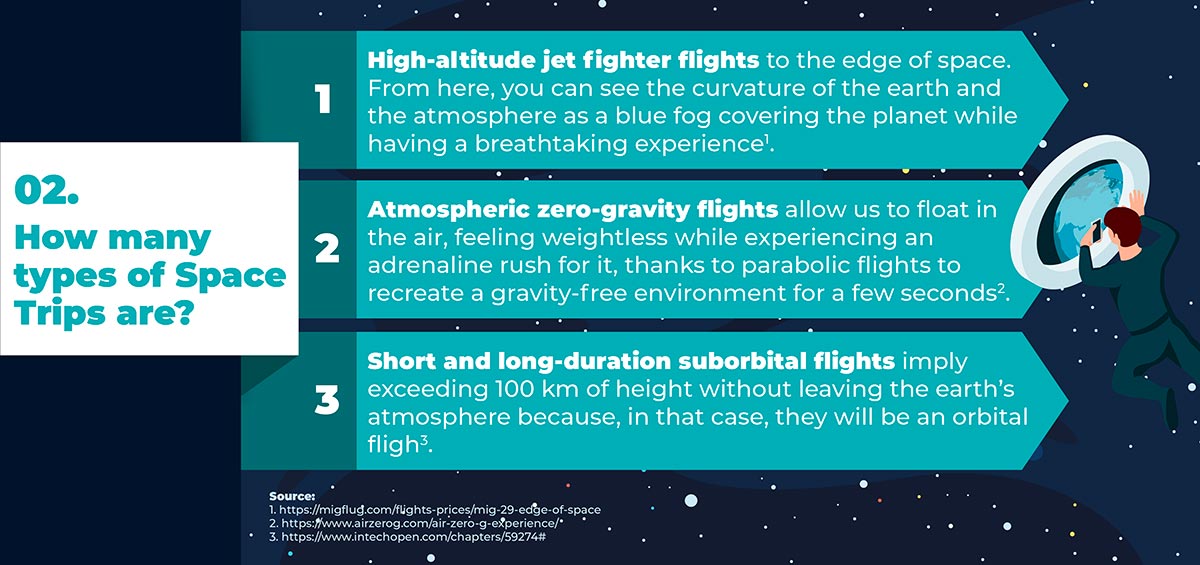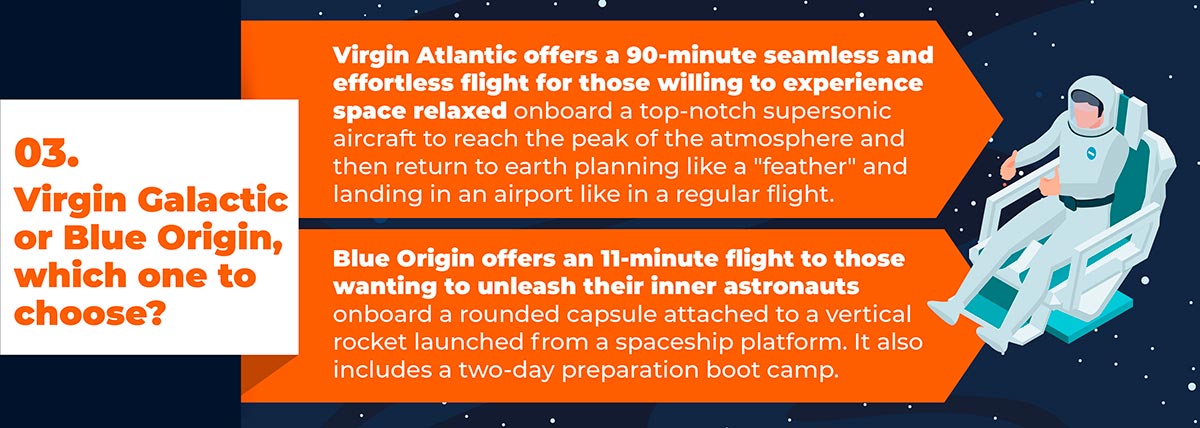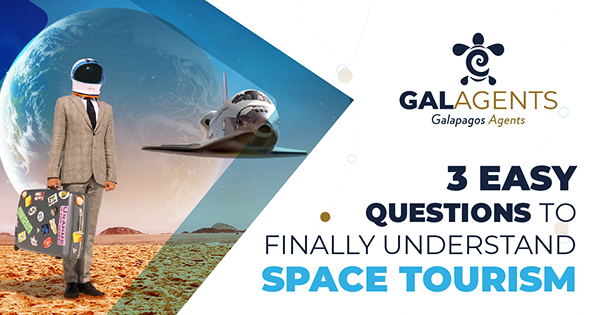A few years passed into the 20th century when the Wright brothers took off the first airplane and made four brief flights at Kitty Hawk, changing our history and way of life. The same happened with the space race in the mid-century and the first step into the moon that Neil Armstrong took in 1969.
Nowadays, a few decades into the 21st century, the way of traveling is evolving, and the outer world is closer than ever for us to experience. Maybe it’s not as futuristic as the Jetsons or Star Trek, but we’re not as far from them.
In this article, we hope to open your eyes to a tourism micro-niche that is getting more and more buzz among millionaires, but that eventually, as happened with commercial flights, will become affordable for other segments.
Are you ready to be launched?
1. What’s Space Tourism?

According to Levi Henderson and Kan Tsui (2019), space tourism is a niche in the aviation industry that allows people to become astronauts and experience space for recreational, leisure, and business purposes.
Indeed, since the suborbital flights of Richard Branson and Jeff Bezos, this type of tourism has become feasible for everyone with the desire and the money to do it. Not in vain, Virgin Galactic is offering its first commercial passenger flight in early 2023 to everyone who is adventurous, audacious, and curious enough to experience space.
2. How many types of Space Trips are?
If your idea of Space Tourism is about orbital trips, let us tell you that the current offer hasn’t reached that level yet, only up to suborbital flights, such as:
- High-altitude jet fighter flights to the edge of space. From here, you can see the curvature of the earth and the atmosphere as a blue fog covering the planet while having a breathtaking experience (migflug.com). But reaching the peak and seeing the world from above is not the only way a traveler can live. The 50 minutes journey includes some acrobats, breaking the sound barrier, and ultimately feeling like the pilot in the Top Gun movie. How is this experience? Watch the following video.

- Atmospheric zero-gravity flights allow us to float in the air, feeling weightless while experiencing an adrenaline rush for it. This sensation, almost indescribable, is possible because the aircraft does parabolic flights to recreate a gravity-free environment for a few seconds. Do you want to know more about this travel option? Check the AirZero G website to get more info.
- Short and long-duration suborbital flights imply exceeding 100 km of height without leaving the earth’s atmosphere because, in that case, they will be an orbital flight (Bermudez-Reyes et al., 2018), and that’s precisely what Virgin Galactic and Blue Origin are offering to space travelers. For example, in the case of Virgin Galactic, the journey they offer takes around 90 minutes, letting the four passengers experience space and the zero-gravity sensation onboard a modern aircraft. Do you want to feel and watch the whole suborbital Virgin Galactic experience? Don’t miss this inspiring and exhilarating video.
3. Virgin Galactic or Blue Origin, which one to choose?
2021, apart from bringing us a bit of normalcy, also brought us Space Tourism. What sounded unrealistic and dreamy became a reality with the first tripulated flights to the space of Blue Origin and Virgin Atlantic.
We all watched and heard Richard Branson from space saying:
“To all the kids down there. I was once a child with a dream, looking up to the stars. Now I’m an adult in a spaceship (…) looking down to our beautiful, beautiful earth. To the next generation of dreamers, if we can do this, imagine what you can do.”
But if you haven’t watched Branson from space yet, here is the video.
But are Virgin and Blue Origin offering the same type of service? Not exactly!

Virgin offers an effortless flight onboard a top-notch supersonic aircraft attached to a modern plane that later releases the jet until reaching the peak of the atmosphere, just entering the thermosphere. The experience onboard is seamless and effortless. It’s like a regular 90-minute flight, but up to the atmosphere and descending like a feather until the aircraft can fly back and land at a landing strip.
On the other hand, Blue Origin lets travelers unleash their inner astronauts. It allowed us to become and feel like an astronaut, including a two-day preparation boot camp. The aircraft is similar to what we are used to seeing in NASA. A rounded capsule is attached to a vertical rocket launched from a spaceship platform. The journey is around eleven minutes from launching to landing; watch the following video to feel the six passengers’ emotions in November 2021.
Hopefully, up to this point, you’re so excited that you want to get onboard these modern supersonic aircraft currently reserved for millionaires willing to feel the adrenaline rushing the weightless body in space. However, as passes with innovative products and services are generally costly, available for early adopters willing to pay high prices for being the first to experience them. They also indirectly finance the technology development until escalating the business and becoming accessible to other segments. Last but not least, space tourism complies with all the regulations from NASA to ensure travelers’ safety during these journeys.
In the meantime, be prepared and ready for Space Tourism’s rocketing in the coming years, as well as other Advance Air Mobility that we previously discussed.

